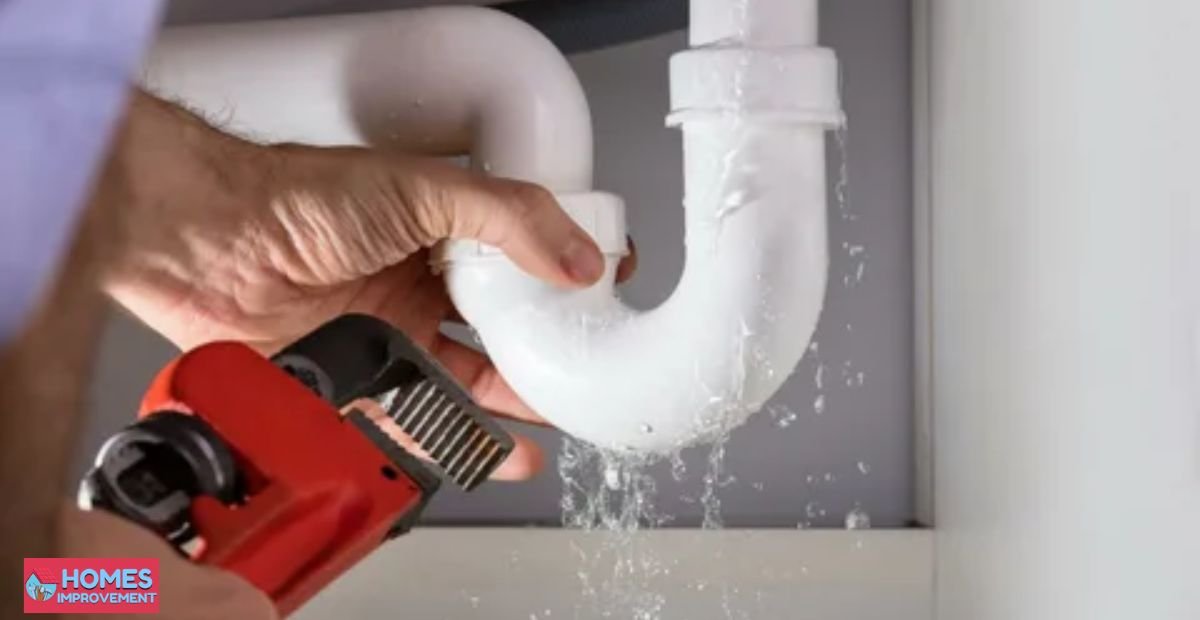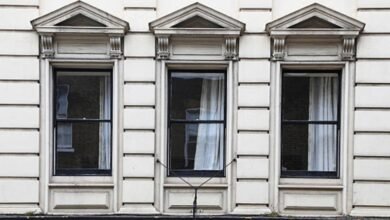Water Damage Repair Made Easy: 5 Proven Methods to Save Your Property

Water damage can strike unexpectedly, whether from burst pipes, heavy rainfall, or leaking appliances. When left untreated, even minor leaks can cause severe structural damage and mold growth. Acting fast and following effective water damage repair methods can save your property from costly restoration later. With the right tools and knowledge, you can minimize the damage and restore your home’s safety and comfort quickly.
The good news is that water damage doesn’t have to be overwhelming. By following a few proven methods, you can clean, dry, and repair affected areas efficiently. From identifying the source to preventing mold growth, every step plays a key role in recovery. Taking the right preventive measures today ensures your home stays strong and protected from future water-related problems.
Understanding the Importance of Water Damage Repair
Understanding the importance of water damage repair is essential for maintaining the safety and longevity of your home. When water infiltrates walls, ceilings, or floors, it doesn’t just cause surface damage—it seeps deep into materials, weakening your home’s structural foundation. If left untreated, it can lead to severe mold and mildew growth, which can pose health risks to your family and decrease indoor air quality. Ignoring even minor leaks can result in costly repairs that could have been avoided with timely action. Proper water damage repair not only restores your property’s original condition but also prevents future deterioration. It helps maintain your home’s value, safety, and comfort for years to come. Acting quickly is the key to avoiding long-term issues and ensuring your home remains a secure and healthy environment.
Identify the Source and Stop the Flow Immediately
The first and most crucial step in water damage repair is to identify the exact source of the problem and stop the water flow as quickly as possible. Whether it’s caused by a burst pipe, a leaking roof, a faulty appliance, or even heavy rainfall, acting fast can make a huge difference in minimizing the damage. The longer the water continues to flow, the more it spreads into walls, flooring, and furniture—causing structural weakening and potential mold growth. Start by shutting off the main water supply to prevent further flooding, and then inspect all visible and hidden areas to determine the extent of the impact. Pay special attention to basements, corners, and behind walls where moisture often hides. Once the water flow is stopped, you can focus on cleaning, drying, and repairing affected areas effectively. This quick, proactive approach not only reduces long-term damage but also saves you from expensive restoration costs in the future.
Remove Standing Water and Moisture Properly
The first step in proper water damage repair is removing all standing water as quickly as possible. Use wet vacuums, mops, or pumps to extract the water from floors, carpets, and corners. The longer the water stays, the higher the chances of mold growth and structural damage. Make sure to check hidden spots like under furniture, cabinets, and rugs, as moisture often collects in these areas unnoticed.
Once visible water is gone, focus on drying out the affected space completely. Open windows, use fans, and dehumidifiers to remove excess moisture from the air and surfaces. If humidity levels remain high, it can cause odors and weaken materials over time. Continue drying until the area feels completely dry to the touch. This step ensures your property stays safe from long-term damage and mold issues.
Clean and Disinfect All Affected Areas
After removing water and drying the space, it’s essential to clean and disinfect every affected surface. Water damage often leaves behind dirt, bacteria, and unpleasant odors that can harm your health and property. Use mild detergents or specialized cleaning agents to scrub walls, floors, and furniture. Pay special attention to porous materials like carpets or fabrics, as they can trap moisture and bacteria.
Here’s how to clean and disinfect effectively:
- Use disinfectant solutions: Apply bleach or antimicrobial cleaners to kill bacteria and prevent mold growth.
- Clean all surfaces: Wipe down furniture, walls, and floors that came in contact with water.
- Ventilate the area: Keep windows open to allow fresh air and speed up the drying process.
- Discard contaminated items: Remove items that cannot be fully cleaned or dried, like soaked rugs or paper materials.
- Wear protection: Use gloves and masks to avoid exposure to harmful residues and germs.
Repair and Restore Structural Damage
Once cleaning and disinfection are complete, the next step is to repair any structural damage caused by water. Prolonged exposure to moisture can weaken walls, floors, and ceilings, leading to cracks, warping, or even collapse. Start by inspecting all wooden frames, drywall, and insulation for signs of decay or mold. Replace any materials that show swelling, discoloration, or a musty odor. It’s best to consult a professional if the damage affects the foundation or electrical systems to ensure your home’s safety and stability.
After addressing the major repairs, focus on restoring the appearance and comfort of your property. Repaint walls, refinish floors, and reinstall fixtures to bring your space back to its original state. If carpets or furniture were removed, replace them with new, moisture-resistant materials to prevent future issues. Restoring your home doesn’t just improve its look—it ensures a safe, healthy, and durable living environment after water damage.
Prevent Mold Growth After Water Damage
Preventing mold growth is one of the most crucial steps after water damage. Mold can begin forming within 24–48 hours in damp conditions, spreading quickly across walls, floors, and ceilings. To avoid this, ensure all affected areas are completely dry using fans, heaters, and dehumidifiers. Keep humidity levels below 50% and improve ventilation in closed spaces. Regularly inspect hidden spots like behind furniture or inside closets for any signs of mold. If you notice a musty smell or dark patches, clean them immediately with an antifungal solution. Taking these preventive steps will protect your home and health from future mold problems.
Professional vs. DIY Water Damage Repair
When dealing with water damage, homeowners often face the decision between handling repairs themselves or hiring professionals. Each approach has its own advantages depending on the severity of the damage, available tools, and level of expertise. Small leaks or minor water exposure can often be managed with DIY methods, while large-scale flooding or hidden moisture problems may require professional intervention to ensure complete restoration.
DIY Water Damage Repair
For minor issues, DIY water damage repair can be cost-effective and quick. You can use basic tools like wet vacuums, fans, and dehumidifiers to remove water and dry out the space. Cleaning with disinfectants and checking for early signs of mold also help prevent further damage. However, it’s essential to monitor the area over time, as missed moisture pockets can lead to hidden mold growth or structural weakening later on.
Professional Water Damage Repair
Hiring professionals is the best choice for extensive or severe water damage. Restoration experts use advanced equipment like industrial dryers, infrared moisture detectors, and sanitizing agents to ensure every corner is thoroughly treated. They can also identify hidden problems such as electrical hazards, foundation damage, or compromised insulation. Though it comes at a higher cost, professional repair guarantees long-term safety, quality restoration, and peace of mind.
Tips to Prevent Future Water Damage
Preventing future water damage requires consistent maintenance and awareness. Regular inspections and timely repairs can save you from costly restoration later. Keep an eye on areas prone to leaks, such as roofs, basements, and plumbing lines. A few preventive habits can go a long way in protecting your property.
Here are some effective tips:
- Inspect plumbing regularly: Check pipes, faucets, and hoses for leaks or corrosion.
- Maintain your roof and gutters: Clean gutters often to prevent water buildup and overflow.
- Seal windows and doors: Proper sealing keeps rainwater from seeping indoors.
- Grade your landscape properly: Ensure water flows away from your foundation, not toward it.
- Install a sump pump: It helps remove excess water during heavy rain or flooding.
By following these tips, you can significantly reduce the risk of future water damage and keep your home dry, safe, and well-protected year-round.
Conclusion
Water damage repair is a crucial process that requires prompt action, careful cleaning, and proper restoration to protect your property and health. Whether you choose a DIY approach or hire professionals depends on the severity of the damage and your available resources. Removing standing water quickly, disinfecting affected areas, and repairing structural issues are key steps to preventing long-term problems. Taking preventive measures afterward can greatly reduce the risk of future damage. Remember, water damage left untreated can lead to costly repairs, mold growth, and health hazards. By acting swiftly and following proper repair methods, you can safeguard your home and ensure its longevity. Consistent maintenance and awareness will help keep your property safe and dry for years to come.
FAQs
What should I do first when I notice water damage?
Immediately turn off the water source and electricity in the affected area. Then, start removing standing water and drying surfaces to prevent mold and further damage.
How long does water damage repair take?
It depends on severity — small leaks may take 1–2 days to fix, while major flooding or structural repairs can take 1–2 weeks for complete restoration.
Can I do water damage repair myself?
Yes, for minor leaks or surface water. However, for deep water penetration or mold growth, professional restoration is strongly recommended to ensure safety.
Does insurance cover water damage repair?
Most home insurance policies cover sudden or accidental water damage, but not neglect or maintenance issues. Always check your policy details for exact coverage.
How can I prevent water damage in the future?
Regularly inspect plumbing, roofs, and appliances. Keep drains clean, install water sensors, and maintain humidity levels below 50% to prevent moisture buildup.





